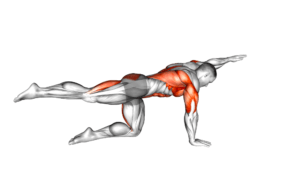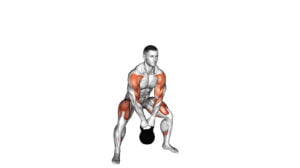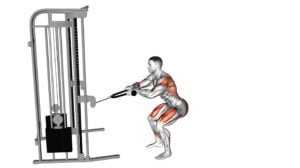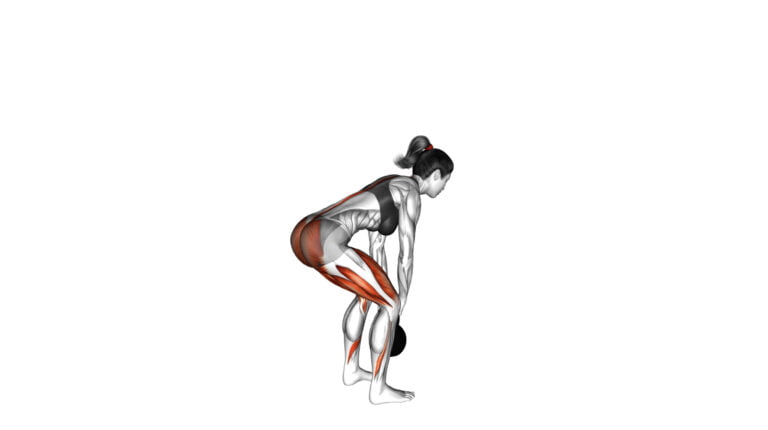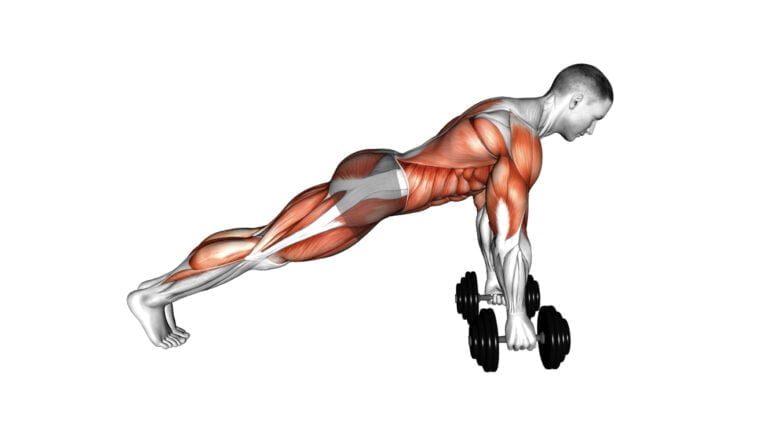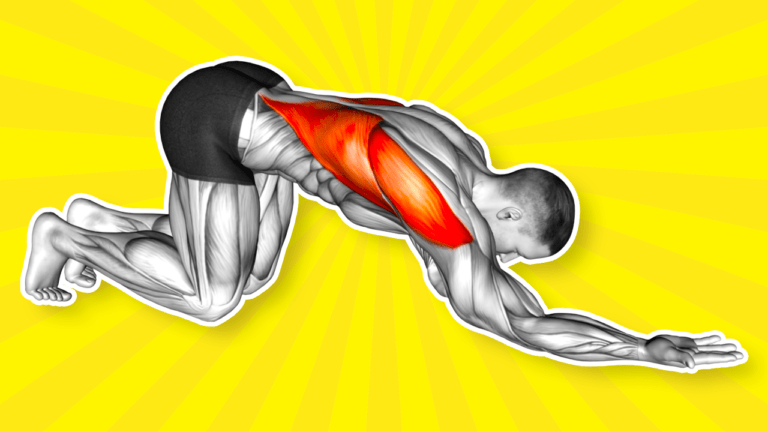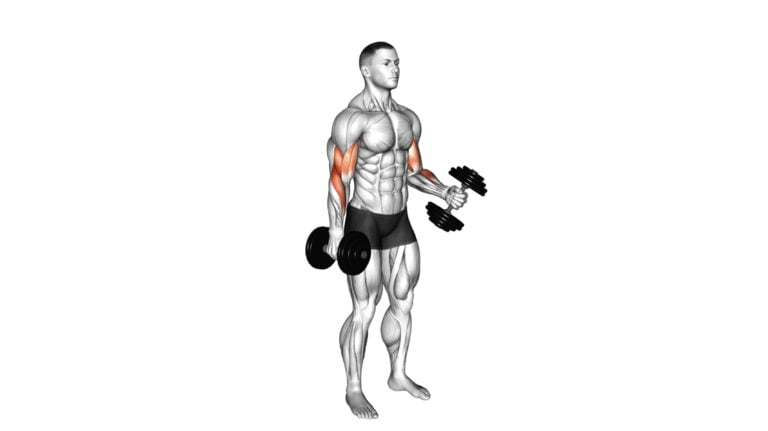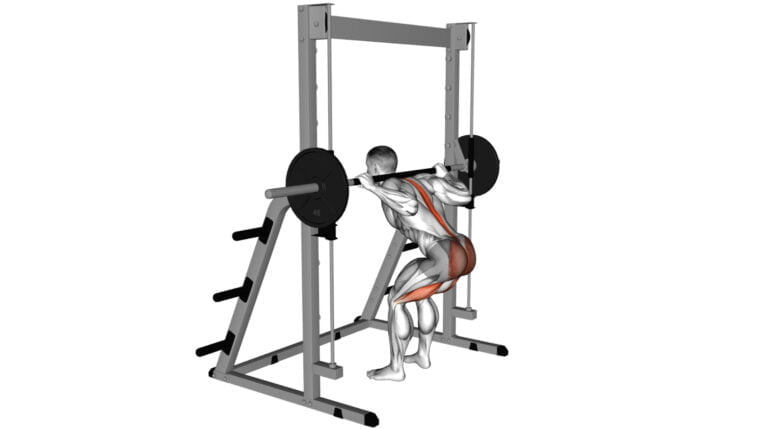10 Lower And Middle Trap Exercises For Enhanced Posture And Strength
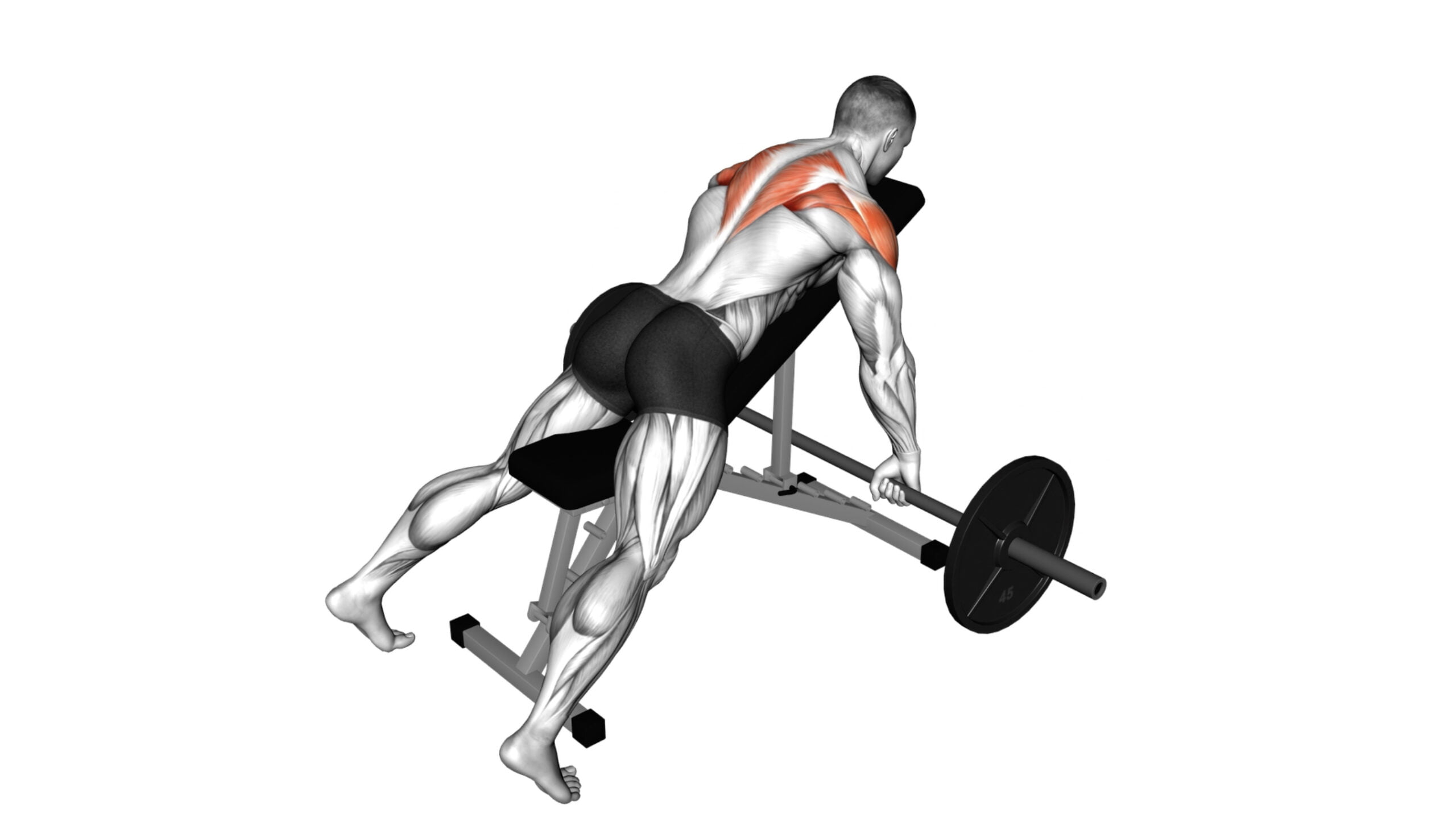
Strong shoulders aren’t just for show; they’re a cornerstone of healthy posture and functional strength. With my extensive background in fitness training and sports therapy, I’ve seen firsthand how focusing on specific muscle groups like the lower and middle trapezius can transform not only your physique but also your overall well-being.
These key muscles support everything from daily tasks to advanced athletic movements, yet they often go neglected in typical workout routines.
Unlocking the full potential of these trapezius muscles isn’t just about looking good – it’s about creating balance in the body. The exercises we’ll dive into are tailored to fortify those often-overlooked areas, crucial for preventing shoulder injuries and maintaining proper form under pressure.

Strengthening your lower and middle traps is fundamental for anyone aiming to lift more, stay active longer, and sidestep pain associated with poor posture. Let’s get your shoulders working for you, not against you.
Key Takeaways
- Strengthening the lower and middle trapezius muscles is crucial for improving posture, increasing shoulder stability, and reducing the risk of injury. These muscle groups support scapular retraction and depression, essential for daily activities and athletic performance.
- Effective exercises such as Dumbbell Decline Shrugs, Barbell Incline Rear Delt Rows, Cable Cross – over Lateral Pulldowns, and Cable Kneeling Shoulder External Rotations target these areas directly. They help in achieving a balanced musculature that provides better biomechanics during movement.
- It’s important to maintain proper form throughout each exercise to engage the intended muscles effectively while preventing strain on other body parts. Controlled movements ensure maximum engagement of lower and middle traps without overburdening surrounding areas.
- A structured workout plan with 3-4 sets of 8-12 reps can lead to optimal muscle growth when focused on lower and middle trap exercises. Adjustments should be made gradually through increased weight or more challenging variations to continue progress.
- Recovery plays an integral role after working out these specific muscles; it involves adequate rest between sessions (at least 48 hours), appropriate stretching before and after workouts, along with consistent attention to maintaining technique as strength improves.
Trapezius Muscles: Anatomy & Function
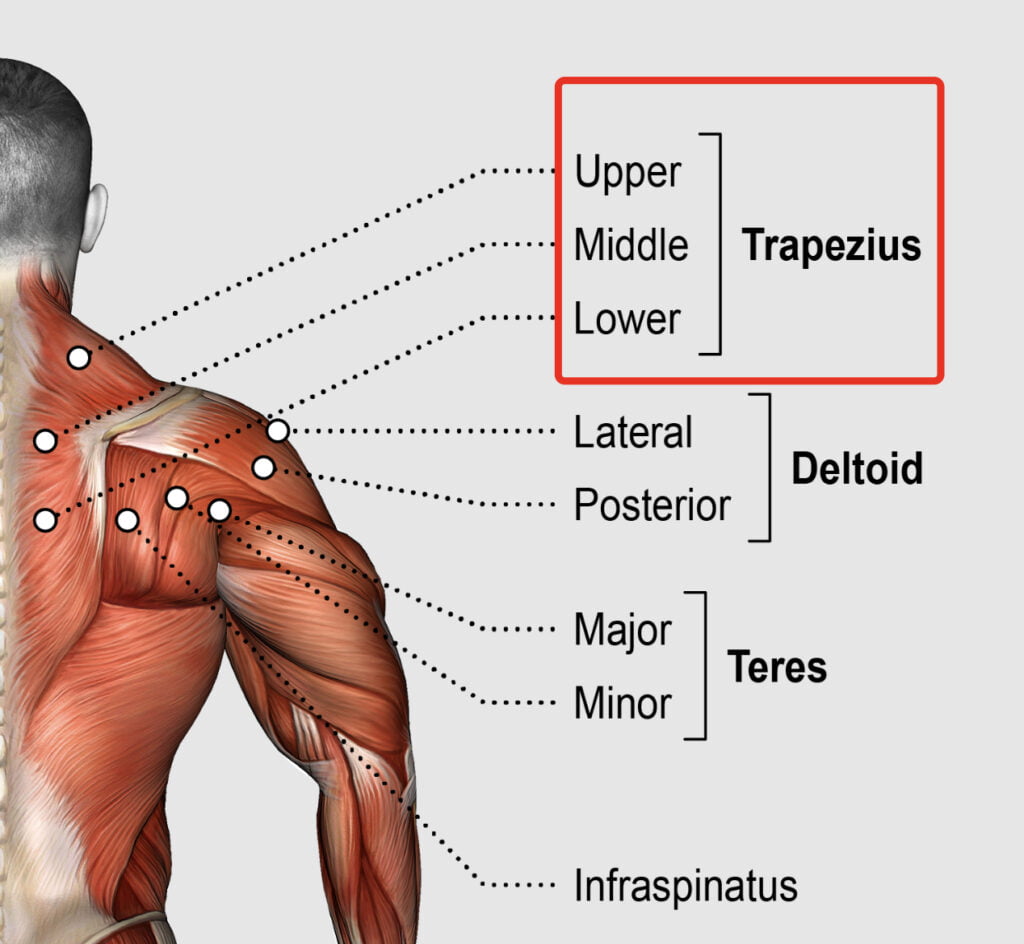
The trapezius muscle is a large, triangular muscle that extends from the base of the skull down to the lower thoracic vertebrae and laterally to the spine of the scapula. It is divided into three regions: upper trap, middle trap, and lower trap, each with distinct functions related to shoulder movement and stability.
The middle and lower traps play a crucial role in scapular retraction and stability, which are essential for maintaining proper posture and preventing shoulder injuries. Understanding their anatomy and function can help you optimize your workout routine for improved strength and posture through targeted lower and middle trap exercises.
Upper Trap
Strong upper traps help stabilize your shoulder blades, providing a solid foundation for lifting and pulling movements. Exercises targeting this area enhance the strength needed to perform everyday tasks like carrying groceries or hoisting luggage into an overhead bin.
With focused training, you can improve muscle balance across your shoulder girdle, which plays a crucial role in maintaining good posture and reducing neck pain.
Developing your upper traps goes beyond the aesthetic appeal of a well-defined back; it’s about building functional power that supports other muscular efforts, from deadlifts to presses.
Embrace exercises such as shrugs and upright rows with proper form to maximize contraction and minimize risk of impingement. As you master these movements, gradually increase weight to challenge muscle fibers further—this not only boosts hypertrophy but also equips you for better overall upper body performance.
Next up are the often overlooked yet equally important middle trap muscles which contribute significantly to scapular retraction and spinal alignment.
Middle Trap
Your middle traps are essential for shoulder stability and play a significant role in upper back strength. These muscles lie between your shoulder blades, pulling them together and ensuring you maintain an upright posture.
Working on them not only boosts your overall musculature but also supports the health of your vertebral column. Stronger middle trapezius muscles can help alleviate shoulder pain by distributing weight more evenly during compound exercises like squats or bench press.
Including targeted movements like barbell reverse grip incline bench rows or seated cable rows can specifically engage these fibers effectively. Remember to keep elbows tucked and focus on squeezing the scapulae with each rep to maximize engagement without burdening other areas improperly.
Enhancing these underworked muscles contributes greatly to a well-rounded workout routine, emphasizing both functionality and form as you execute every exercise from lat pulldowns to rear delt flys with improved control and power.
Lower Trap
Strengthening the lower trapezius, or lower trap, is crucial for a balanced and powerful upper body. Often overlooked in standard workouts, this muscle spans the lower part of your shoulders and back, playing a pivotal role in posture and shoulder movement.
Exercises targeting the lower traps promote scapular retraction and depression—essential motions for those heavy lifts like deadlifts and rows. Building these muscles not only enhances overall back strength but also safeguards against common shoulder injuries.
Engaging in movements such as cable decline seated wide-grip row or dumbbell standing scapular external rotation effectively isolates the lower traps. Incorporating these exercises into routines bolsters stability throughout compound movements, ensuring that each lift is performed with precision.
As a result, athletes may notice improved performance across various sports activities where strong traps provide an edge. With consistent training focused on this key area, expect to see growth—not just in size but functionality of your lats and entire posterior chain.
Benefits of Strong Lower and Middle Traps
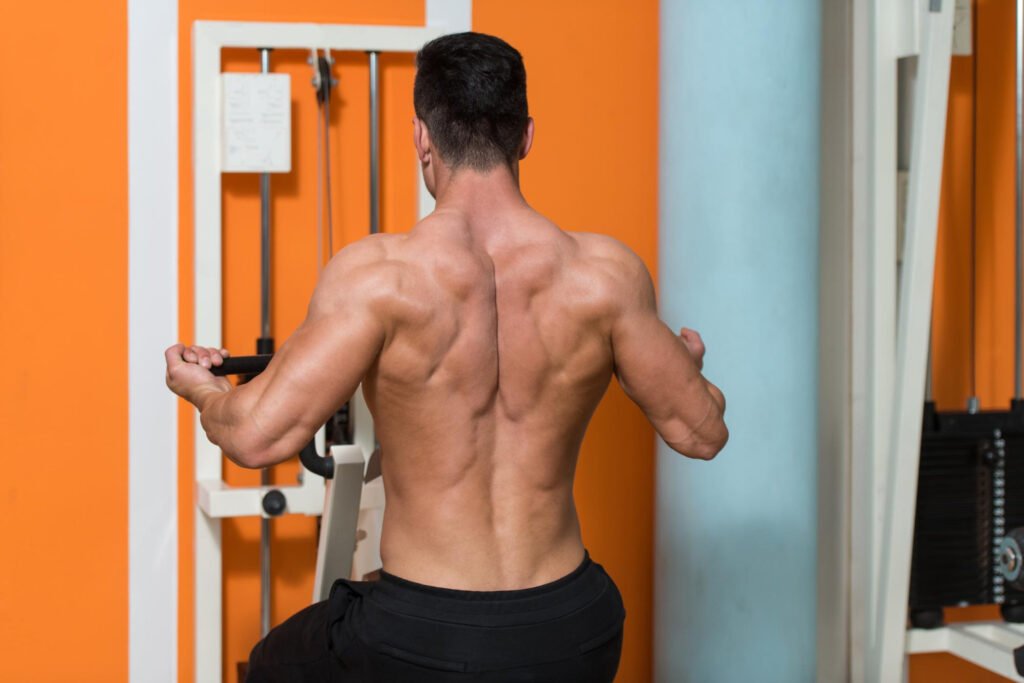
Strong lower and middle trap muscles contribute to improved posture, increased stability and strength, as well as a reduced risk of injury. These benefits play an essential role in overall physical performance and functionality.
Improved posture
To improve posture, focus on exercises that target the lower and middle traps. These muscles play a crucial role in stabilizing the shoulder blades and promoting proper alignment of the upper body.
By strengthening these areas, you can reduce the likelihood of slouching and forward head posture, leading to a more upright and aligned position.
Engaging in specific lower and middle trap exercises will not only enhance your overall strength but also contribute to better postural support. As a result, you’ll experience less strain on your neck and shoulders while maintaining an optimal posture throughout daily activities or workouts.
Increased stability and strength
To enhance stability and strength, incorporating lower and middle trap exercises into your workout routine is crucial. These exercises target specific muscles in your back, promoting better posture and reducing the risk of injury.
Dumbbell decline shrugs, barbell incline rear delt rows, and cable kneeling shoulder external rotations are just a few examples of effective movements that can contribute to improved stability and overall strength.
Engaging in these exercises regularly not only enhances muscular endurance but also helps develop a solid foundation for various activities such as weightlifting or sports performance.
Reduced risk of injury
Strengthening your lower and middle traps can lead to a reduced risk of injury during physical activities. Engaging in exercises that target these muscles helps stabilize the shoulders and improve overall posture, reducing the likelihood of strain or overuse injuries.
By incorporating specific movements into your workout routine, you can enhance the strength and endurance of these critical muscle groups, promoting better biomechanics and minimizing the risk of common muscle imbalances or shoulder-related injuries.
Incorporating lower and middle trap exercises into your regular fitness regimen not only enhances stability but also contributes to a more resilient musculoskeletal system overall.
Best Lower and Middle Trap Exercises

Incorporate effective exercises like the Dumbbell Decline Shrug and Cable Cross-over Lateral Pulldown to strengthen your lower and middle trap muscles for enhanced posture and strength.
Read on to discover more about these essential exercises.
1. Dumbbell Decline Shrug
For the dumbbell decline shrug, position yourself on a decline bench with a pair of dumbbells. Hold the dumbbells in each hand, allowing your arms to hang straight down at your sides.
Keep your palms facing inward towards each other and lift your shoulders as high as possible toward your ears. Squeeze and hold for a moment before lowering back to the starting position.
To maximize the effectiveness of this exercise, focus on using controlled motions and avoid swinging or jerking movements. Additionally, maintain proper posture throughout by keeping your chest up and engaging your core muscles.
2. Dumbbell Incline Row
Adjust the bench to a 45-degree incline and lie facedown. Hold a dumbbell in each hand, palms facing each other. Pull the dumbbells up toward your ribcage while keeping your elbows close to your body.
Squeeze your shoulder blades together at the top of the movement, then lower the dumbbells back down with control.
To perform a proper dumbbell incline row, engage your core and avoid arching your lower back as you lift. This exercise effectively targets the middle and lower traps, as well as the rhomboids and lats for improved posture and upper body strength.
3. Dumbbell Standing Scapular External Rotation
The dumbbell standing scapular external rotation is a great exercise for targeting the muscles of the lower and middle traps. To perform this exercise, stand with your feet shoulder-width apart, holding a dumbbell in each hand at your sides.
Keeping your elbows bent at 90 degrees, raise the dumbbells out to the sides until they are parallel to the ground. Focus on squeezing your shoulder blades together as you do this movement to engage the lower and middle traps effectively.
This exercise helps improve scapular stability and promotes balanced muscle development in the shoulders, which can contribute to better posture and reduced risk of injury during daily activities or sports.
4. Barbell Incline Rear Delt Row
The barbell incline rear delt row targets the rear delts and upper back muscles, promoting better shoulder stability and posture. Start by setting an adjustable bench at a 45-degree angle with a barbell placed in front.
Lie face down on the bench, grasp the barbell with an overhand grip, and pull it towards your chest while keeping your elbows close to your body. Squeeze your shoulder blades together at the top of the movement before slowly lowering the weight back down.
This exercise not only strengthens the posterior shoulder muscles but also enhances overall upper body strength. It’s essential to maintain proper form throughout to maximize its benefits for shoulder health and stability.
5. Barbell Reverse Grip Incline Bench Row
To perform the Barbell Reverse Grip Incline Bench Row, lie face down on an incline bench while holding a barbell with a reverse grip. Pull the bar towards your lower chest in a rowing motion, keeping your elbows close to your body and squeezing your shoulder blades at the top.
Lower the bar back down under control and repeat.
This exercise targets the middle and lower traps, as well as the rhomboids and lats, promoting improved posture and back strength. It also engages the biceps, forearms, and rear delts for comprehensive upper body development.
6. Landmine Bent over Row with V-bar
Place a V-bar attachment on the landmine and load it with an appropriate weight. Stand with your feet shoulder-width apart and grasp the V-bar with both hands, keeping your back straight.
Hinge at the hips, lowering your torso towards the ground while maintaining a slight bend in your knees. Pull the V-bar towards your lower chest by retracting your shoulder blades and keeping your elbows close to your body.
Slowly lower the weight back down until your arms are fully extended.
As you perform this exercise, focus on engaging the middle and lower trapezius muscles to stabilize and control the movement. This exercise targets these specific muscles effectively without placing excessive strain on surrounding muscle groups.
7. Cable Bent Over Reverse Grip Row
Transitioning from the Landmine Bent over Row with V-bar to Cable Bent Over Reverse Grip Row, this exercise targets the middle and lower traps along with the latissimus dorsi, rhomboids, and biceps.
Begin by setting up a cable machine with a straight bar attachment at its lowest setting. Stand facing the machine, grasp the bar with an underhand grip, then step back until your arms are fully extended.
Engage your core and hinge forward at the hips while keeping your back flat. Pull the bar towards your lower abdomen while squeezing your shoulder blades together, then slowly release back to starting position.
8. Cable Cross-over Lateral Pulldown
The cable cross-over lateral pulldown is an effective exercise for targeting the lower and middle traps while also engaging the latissimus dorsi and rhomboids. Sit facing a cable machine, gripping the handles with each hand, palms facing downward.
Pull the handles down and across your body, maintaining a slight bend in your elbows as you squeeze your shoulder blades together. Focus on initiating the movement from your back muscles rather than using momentum to pull the weight.
This exercise helps strengthen and stabilize the muscles responsible for scapular retraction, which is essential for improving posture and reducing imbalances between upper body muscle groups.
Incorporating this into your routine can lead to enhanced back strength and improved shoulder stability during various movements like overhead presses or pull-ups.
9. Cable Decline Seated Wide-grip Row
Sit on the decline bench with your feet secured and knees slightly bent. Grasp the wide-grip cable attachment and keep your back straight. Pull the bar towards your lower chest, squeezing your shoulder blades together at the end of the movement.
Slowly extend your arms to return to the starting position.
This exercise targets both the middle traps and lower traps, promoting better posture and upper body strength.
10. Cable Kneeling Shoulder External Rotation
Sit on a bench with your feet firmly planted on the ground and hold the cable handle in one hand. Keep your elbow close to your side, bent at a 90-degree angle. With controlled movement, rotate your shoulder away from the pulley, extending your arm outwards.
Slowly bring it back to the starting position against the resistance of the cable.
Engage your core muscles for stability and maintain proper posture throughout the exercise. Focus on isolating and targeting the middle traps as you perform this movement to effectively strengthen and stabilize your shoulders while also improving overall posture.
How to Incorporate These Exercises Into Your Workout Routine

When incorporating lower and middle trap exercises into your workout routine, it’s important to focus on proper form, set and rep ranges, progression, and overload. A sample workout plan can help you get started, and don’t forget to prioritize recovery and maintenance for optimal results.
Set and rep ranges
To achieve optimal results, aim for 3-4 sets of 8-12 reps per exercise. For muscle endurance, consider performing higher reps in the range of 15-20 per set. Adjust the weight to ensure you can complete your desired rep range with proper form and control.
Gradually increase the weight as you gain strength and confidence in your ability to perform each exercise effectively.
Maintaining a consistent routine with appropriate set and rep ranges will help you build strength and endurance in your lower and middle traps, contributing to improved posture and reduced risk of injury in everyday activities.
Progression and overload
Having established your set and rep ranges, it’s essential to gradually increase resistance or intensity to drive continued muscle adaptation. This concept of progression and overload is crucial in taking your lower and middle trap exercises to the next level.
By adding more weight, increasing reps, or incorporating advanced variations of the exercises, you stimulate further muscular growth and strength development. Overload challenges your muscles beyond their accustomed levels, prompting them to adapt by growing stronger and more resilient.
Implementing a progressive approach prevents plateaus and ensures ongoing improvements in muscle endurance, postural support, and overall physical function. It’s important to listen to your body’s signals during these progressions while consistently pushing yourself outside of your comfort zone – this balance will help you achieve optimal results from your lower and middle trap workouts without risking injury or burnout.
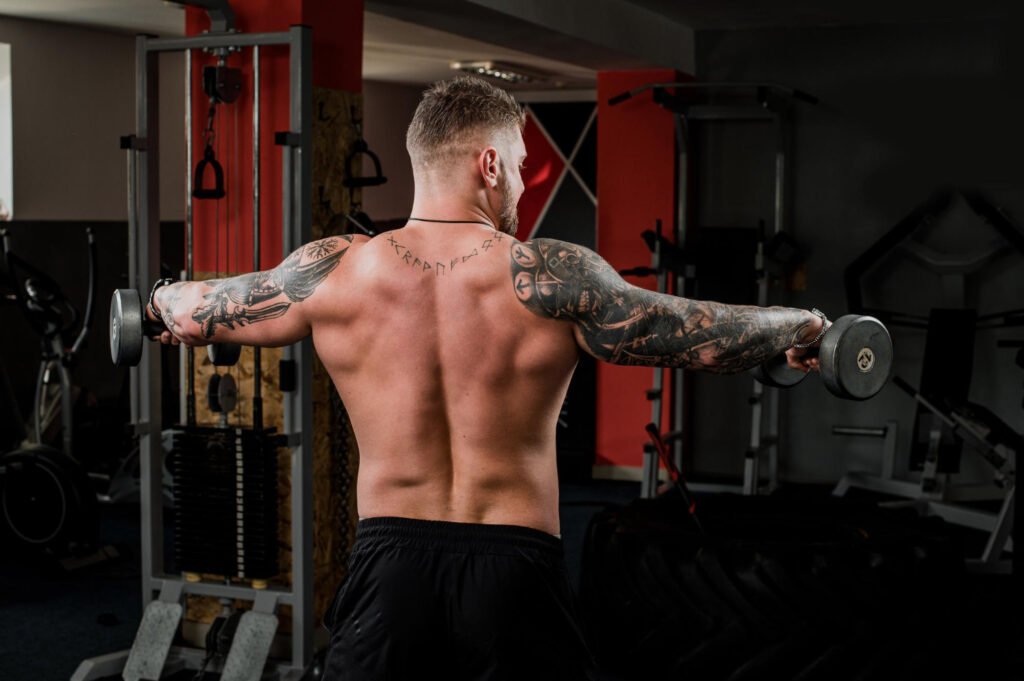
Importance of proper form
Proper form is crucial when performing lower and middle trap exercises to maximize the effectiveness of the movements and minimize the risk of injury. Maintaining proper form ensures that the targeted muscles are engaged optimally, leading to better muscle activation and growth.
It also helps in preventing compensatory movements that can place unnecessary stress on other areas of the body, promoting overall safety during training.
When executing lower and middle trap exercises, focusing on proper form includes maintaining a stable core, controlled movement patterns, and avoiding excessive momentum. Emphasizing correct posture throughout each rep is essential for targeting the intended muscle groups while reducing strain on surrounding joints.
Engaging in these exercises with proper technique allows for better progression over time by gradually increasing resistance or load without compromising form.
Sample workout plan
– Start your workout with 5-10 minutes of dynamic stretching to warm up your muscles. Then, move on to the lower and middle trap exercises, performing 3 sets of 10-12 reps for each exercise.
Ensure you use proper form and avoid straining your neck or shoulders during the movements. Rest for 60-90 seconds between sets.
– Incorporate these exercises into your routine twice a week, allowing at least 48 hours of rest between sessions. Gradually increase the weight as you build strength and aim for progression in each session.
Tips for recovery and maintenance
- After completing your workout, focus on proper recovery to ensure the health and longevity of your muscles. Here are some essential tips for recovery and maintenance:
- Include a cooldown: After your workout, perform light stretching or low-intensity cardiovascular exercise to help reduce muscle tension and promote circulation.
- Hydrate adequately: Drink plenty of water throughout the day to support muscle function and aid in recovery.
- Get sufficient rest: Aim for 7-9 hours of quality sleep each night to facilitate muscle repair and growth.
- Foam rolling: Incorporate foam rolling into your routine to alleviate muscle tightness and improve flexibility.
- Active recovery days: Schedule active recovery days with low-impact activities such as yoga, swimming, or walking to promote blood flow without causing additional stress on muscles.
- Balanced nutrition: Consume a well-rounded diet rich in lean protein, healthy fats, complex carbohydrates, and micronutrients to fuel muscle repair and growth.
- Listen to your body: Pay attention to signs of fatigue, soreness, or injury, and adjust your training intensity or take necessary rest days accordingly.
- Mobility work: Implement mobility exercises to enhance joint flexibility and prevent muscular imbalances that could lead to injury over time.
- Seek professional guidance: Consider consulting with a physical therapist or sports medicine professional for personalized advice on recovery strategies and injury prevention techniques.
- Manage stress levels: Incorporate stress-reducing practices such as meditation, deep breathing exercises, or leisure activities to support overall well-being and aid in recovery.
Conclusion
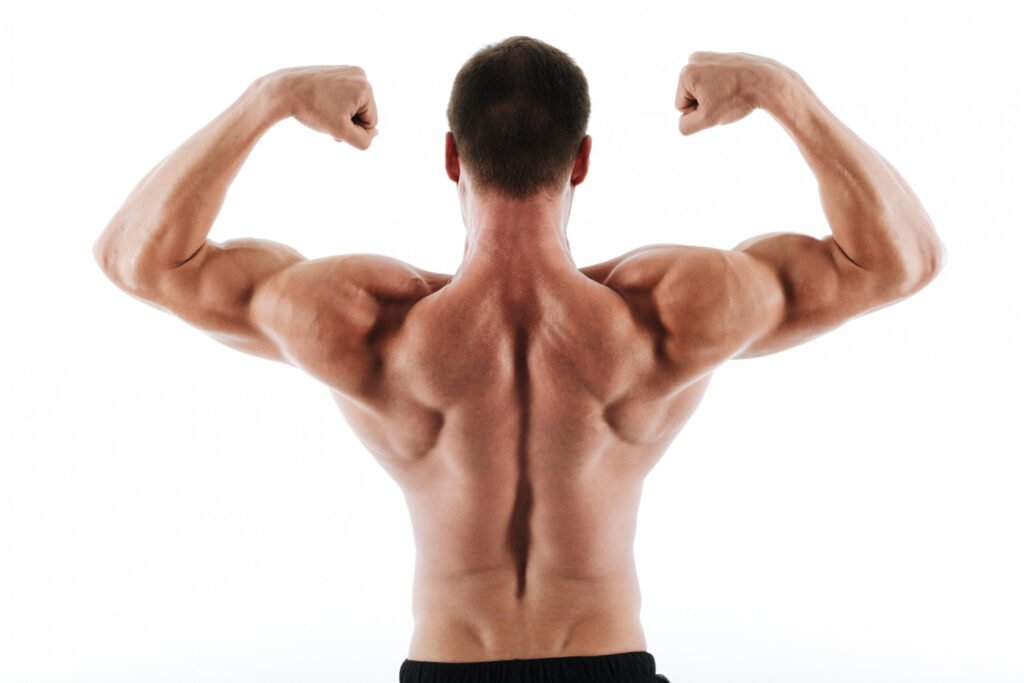
Incorporate these lower and middle trap exercises into your workout routine for improved posture and strength. Emphasize the importance of proper form to maximize the benefits of each exercise.
These practical strategies are easy to implement and offer efficient ways to enhance your overall muscle stability and reduce injury risk. Through consistent practice, you can expect significant improvements in your posture, stability, and overall strength.
Explore additional resources or seek professional guidance to further advance your knowledge and skills in this area. Let these exercises inspire you as you work towards achieving better posture, enhanced strength, and a more resilient body.
FAQs
1. Why are exercises for lower and middle traps important?
Exercises targeting the lower and middle trap muscles improve posture, strengthen shoulder blades, and enhance overall shoulder health.
2. Can incline bench press work my middle traps?
Absolutely! The incline bench press effectively engages your middle traps along with other upper body muscles for balanced strength training.
3. What equipment do I need for these trap exercises?
You can use free weights like dumbbells or kettlebells, a pull-up bar for chin-ups, or even a weighted vest to increase resistance in your workouts.
4. Are there any trap exercises that also work the rotator cuff?
Yes, certain movements such as standing position reverse flys will not only target your rear deltoids but also engage the rotator cuff and teres minor muscles.
5. Do I need to lift heavy weights to strengthen my trapezius muscles?
Not necessarily; incorporating both fast twitch muscle-fiber engaging exercises like pushups and slow-twitch focus movements using lighter weights can be effective in building strength over time.
6. How often should I perform lower and middle trap exercises?
For best results, integrate these into your routine two to three times per week as part of a comprehensive strength training regimen tailored to meet your fitness goals.

Author
Years ago, the spark of my life’s passion ignited in my mind the moment I stepped into the local gym for the first time. The inaugural bead of perspiration, the initial endeavor, the very first surge of endorphins, and a sense of pride that washed over me post-workout marked the beginning of my deep-seated interest in strength sports, fitness, and sports nutrition. This very curiosity blossomed rapidly into a profound fascination, propelling me to earn a Master’s degree in Physical Education from the Academy of Physical Education in Krakow, followed by a Sports Manager diploma from the Jagiellonian University. My journey of growth led me to gain more specialized qualifications, such as being a certified personal trainer with a focus on sports dietetics, a lifeguard, and an instructor for wellness and corrective gymnastics. Theoretical knowledge paired seamlessly with practical experience, reinforcing my belief that the transformation of individuals under my guidance was also a reflection of my personal growth. This belief holds true even today. Each day, I strive to push the boundaries and explore new realms. These realms gently elevate me to greater heights. The unique combination of passion for my field and the continuous quest for growth fuels my drive to break new ground.

